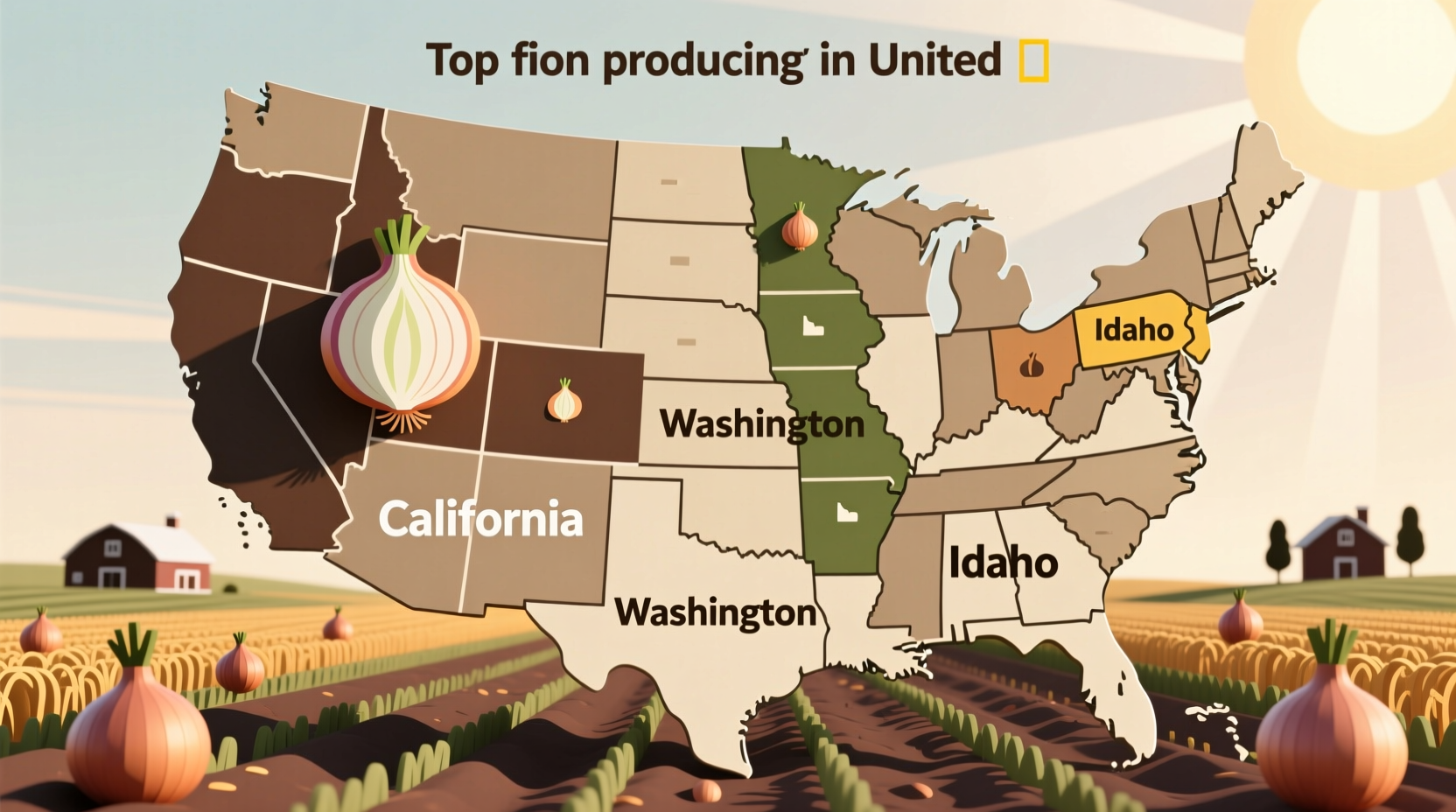Understanding US Onion Production: Key Facts You Need
When you're searching for where onions are most produced in the US, you're likely looking for reliable, current data to inform cooking decisions, agricultural research, or business planning. This guide delivers precisely that—verified production statistics, regional insights, and practical applications of this knowledge.
Top Onion-Producing States: Current Production Statistics
According to the USDA National Agricultural Statistics Service's 2023 Vegetable Summary report, Washington state dominates US onion production, accounting for nearly 25% of the nation's total output. The Pacific Northwest region has become the epicenter of commercial onion farming due to its ideal growing conditions and advanced irrigation systems.
| Rank | State | Annual Production (Pounds) | Percentage of US Total | Primary Onion Types |
|---|---|---|---|---|
| 1 | Washington | 1.8 billion | 24.7% | Yellow storage, Red |
| 2 | Idaho | 1.5 billion | 20.6% | Yellow storage, Red |
| 3 | Oregon | 950 million | 13.1% | Yellow, Red, White |
| 4 | California | 875 million | 12.0% | Red, White, Sweet |
| 5 | New York | 520 million | 7.2% | Yellow storage, Red |
Data source: USDA NASS 2023 Vegetable Summary
Why Washington Leads US Onion Production
Washington's dominance in onion farming isn't accidental—it results from a perfect combination of factors that create ideal growing conditions. The state's unique geography in the Columbia Basin provides:
- Volcanic soil composition rich in minerals that enhance flavor development
- Controlled irrigation systems drawing from the Columbia River
- Long daylight hours during growing season (16+ hours in summer)
- Dry harvest conditions that prevent rot and allow for proper curing
- Temperature variation between day and night that concentrates sugars
"The Columbia Basin's climate creates onions with exceptional storage capabilities," explains Dr. Robert Klinger, Vegetable Crop Specialist at Washington State University. "Our onions routinely store for 10-12 months under proper conditions, giving Washington growers a significant market advantage."

Evolution of US Onion Production Regions
Understanding where onions are most produced in the US requires examining historical shifts in agricultural patterns. The timeline below shows how production centers have evolved:
- Pre-1950s: New York and Michigan dominated production using traditional field methods
- 1950-1980: California emerged as a major producer, particularly for sweet onions
- 1980-2000: Irrigation advancements enabled Pacific Northwest expansion
- 2000-Present: Washington surpasses all states, accounting for over 24% of national production
This shift reflects broader agricultural trends toward regions with reliable water access and mechanized farming capabilities. The Pacific Northwest's rise demonstrates how technological advances in irrigation and storage have reshaped US agricultural geography.
Regional Specialization in US Onion Production
Each major onion-producing state has developed specialization based on climate and soil conditions:
- Washington & Idaho: Primarily yellow storage onions (like the famous 'Walla Walla Sweet' in Washington) known for long shelf life
- Oregon: Diverse production including red onions for fresh markets and white onions for processing
- California: Focus on sweet onions (Vidalia-style) and red varieties for fresh consumption
- New York: Traditional yellow storage onions with strong regional market presence
These regional specializations matter to consumers and chefs because they affect flavor profiles, storage capabilities, and seasonal availability. For example, Washington's storage onions typically hit peak quality from October through June, while California sweet onions are best from April through August.
Practical Implications of US Onion Production Data
Knowing where onions are most produced in the US isn't just trivia—it has real-world applications:
For Home Cooks
Understanding regional production helps you select the right onion for your recipe. Storage onions from Washington work best for long-cooking dishes like soups and stews, while California sweet onions excel in fresh applications like salads and salsas.
For Culinary Professionals
Restaurant chefs can optimize menu planning by aligning with seasonal availability. Many high-end restaurants now feature "onion variety menus" that change throughout the year based on which regions are harvesting.
For Agricultural Businesses
Producers and distributors use this data to make informed decisions about planting, storage, and market timing. The concentration of production in specific regions has led to specialized infrastructure, including Washington's extensive onion storage facilities that can hold up to 2 billion pounds at peak capacity.
Future Trends in US Onion Production
Several factors may influence where onions are most produced in the US in coming years:
- Water availability concerns in the West may shift some production to Midwest states with more reliable rainfall
- Consumer demand for specialty varieties is driving increased production of red and sweet onions
- Climate change impacts may alter traditional growing regions over time
- Technological advances in controlled environment agriculture could create new production centers
Despite these potential shifts, the Pacific Northwest's established infrastructure and ideal growing conditions suggest Washington will likely remain the top onion-producing state for the foreseeable future.











 浙公网安备
33010002000092号
浙公网安备
33010002000092号 浙B2-20120091-4
浙B2-20120091-4